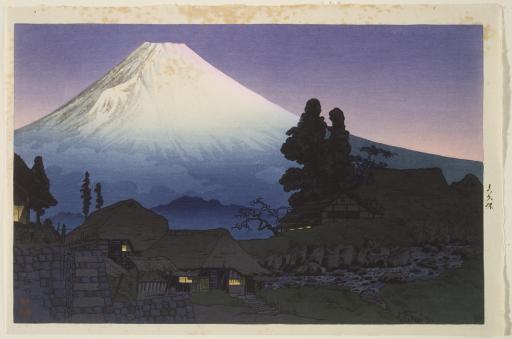Mt. Fuji from Mizukubo, Takahashi Shōtei
Artwork Overview
Takahashi Shōtei, artist
1871–1945
Mt. Fuji from Mizukubo,
circa 1938, Showa period (1926–1989)
Where object was made: Japan
Material/technique: color woodcut
Dimensions:
Image Dimensions Height/Width (Height x Width): 237 x 370 mm
Image Dimensions Height/Width (Height x Width): 9 5/16 x 14 9/16 in
Sheet/Paper Dimensions (Height x Width): 262 x 392 mm
Sheet/Paper Dimensions (Height x Width): 10 5/16 x 15 7/16 in
Mat Dimensions (Height x Width): 14 x 19 in
Image Dimensions Height/Width (Height x Width): 237 x 370 mm
Image Dimensions Height/Width (Height x Width): 9 5/16 x 14 9/16 in
Sheet/Paper Dimensions (Height x Width): 262 x 392 mm
Sheet/Paper Dimensions (Height x Width): 10 5/16 x 15 7/16 in
Mat Dimensions (Height x Width): 14 x 19 in
Credit line: Gift of Fina C. Ott
Accession number: 1979.0181
Not on display
If you wish to reproduce this image, please submit an image request


